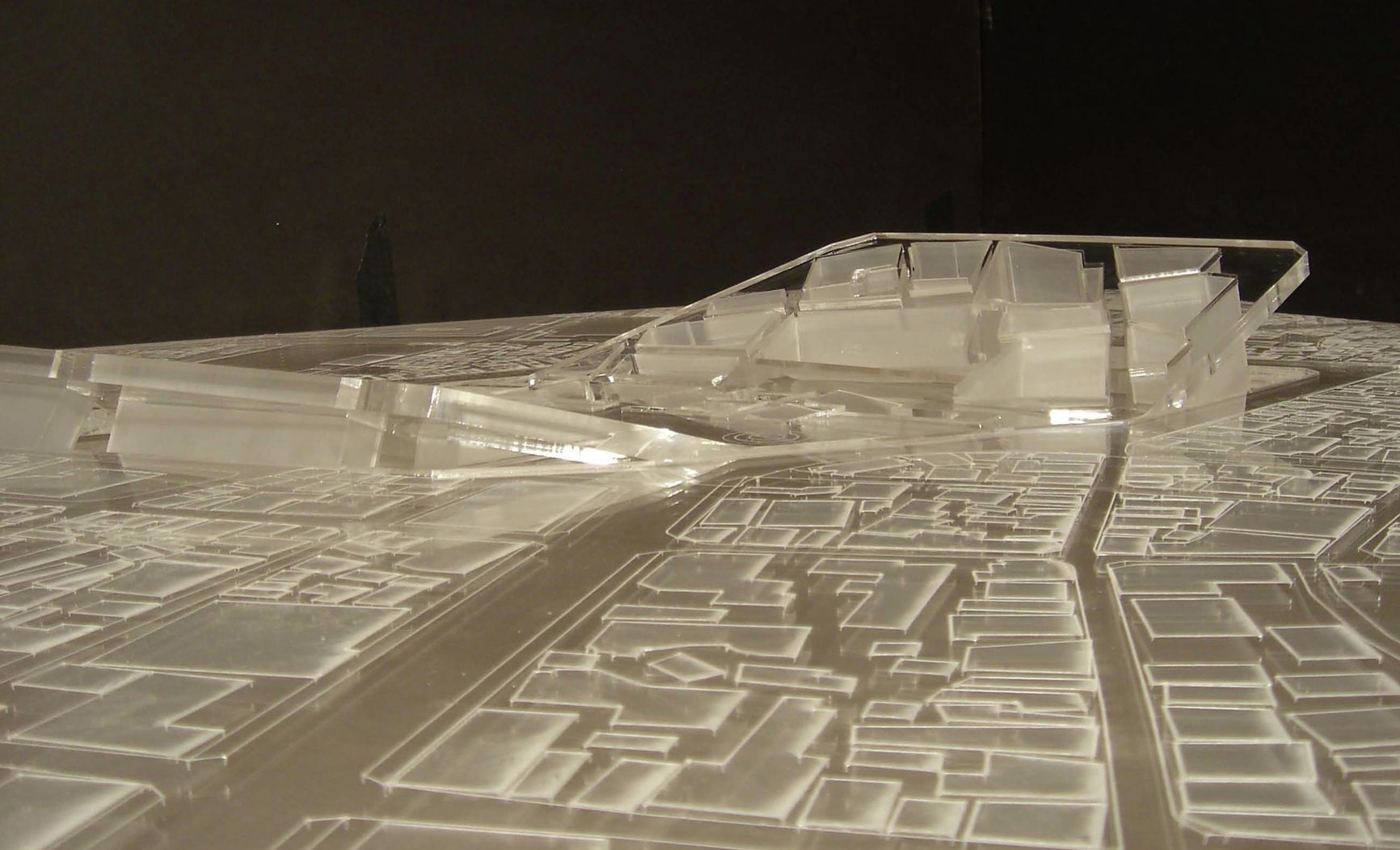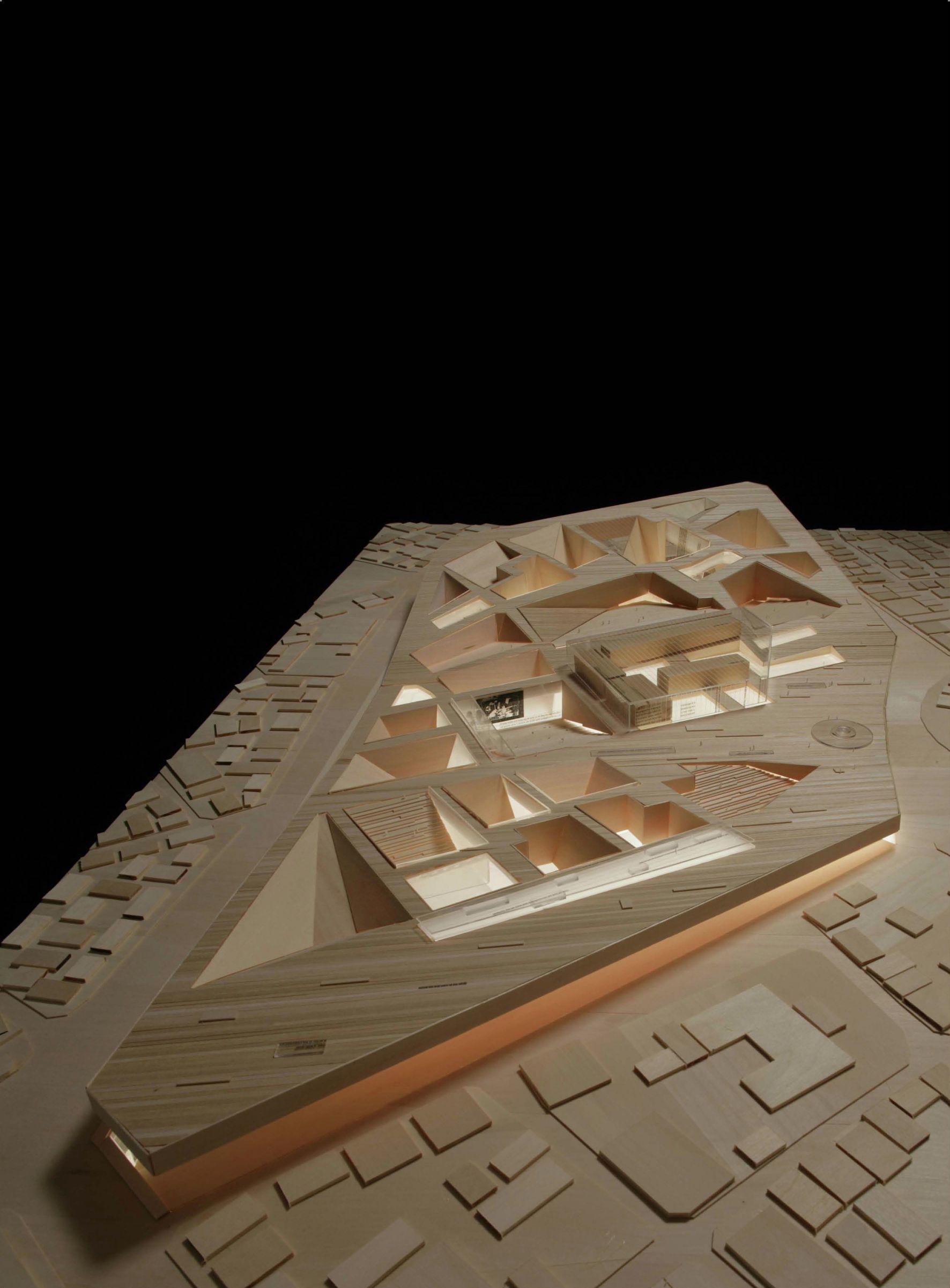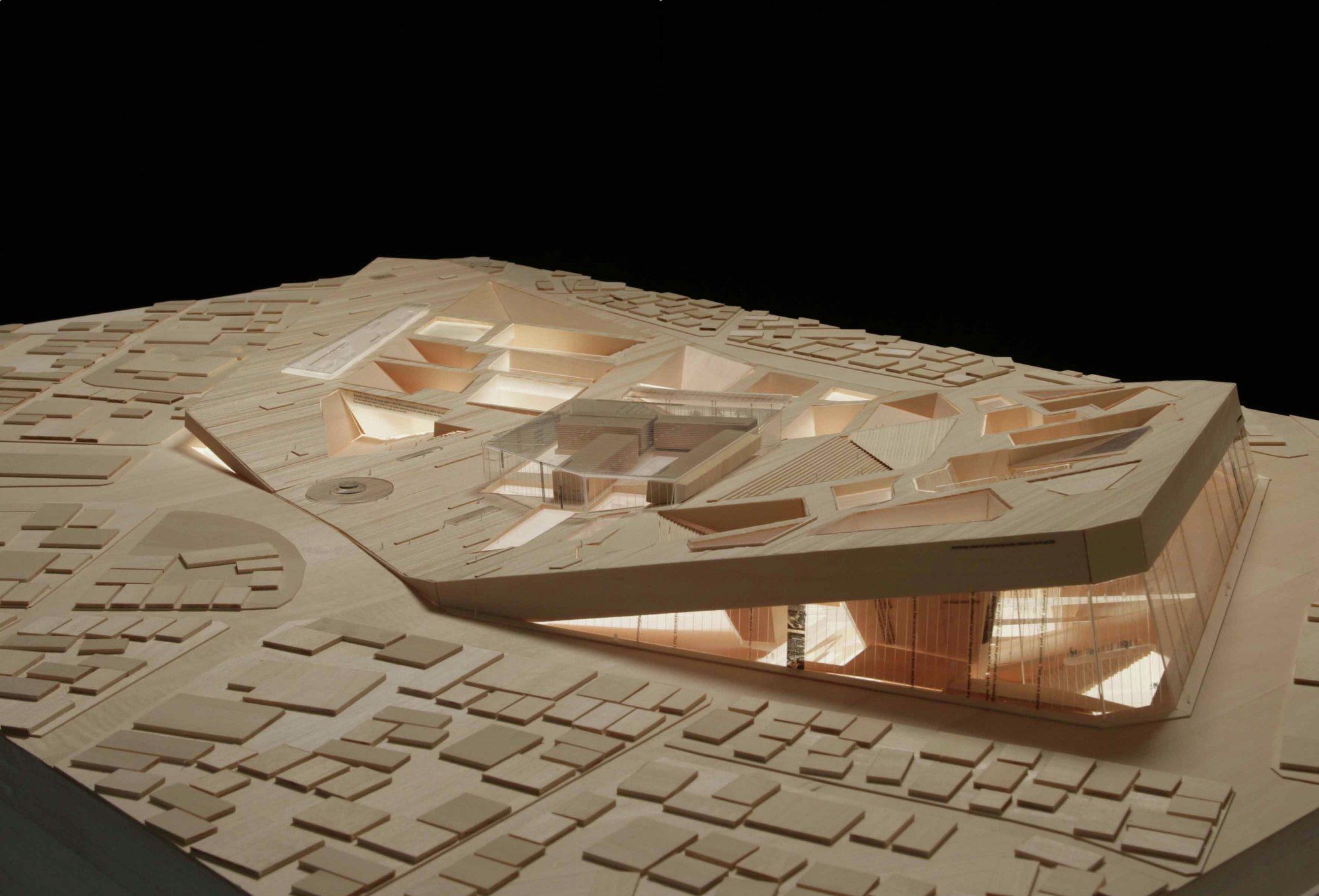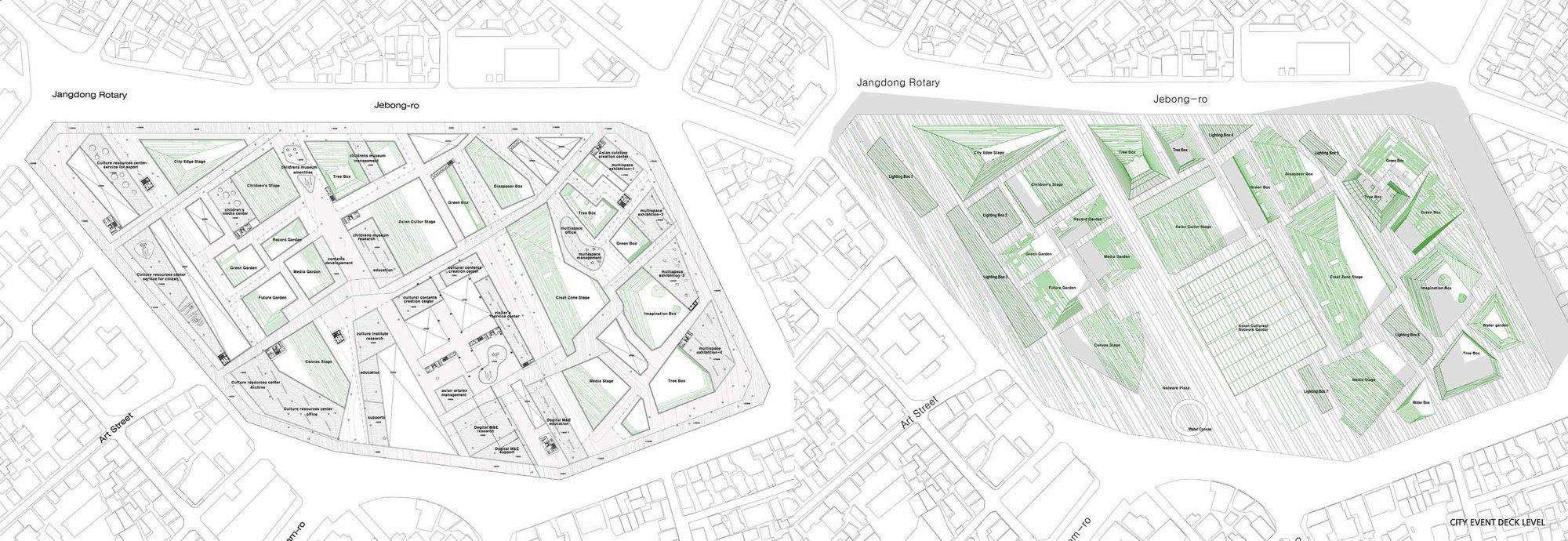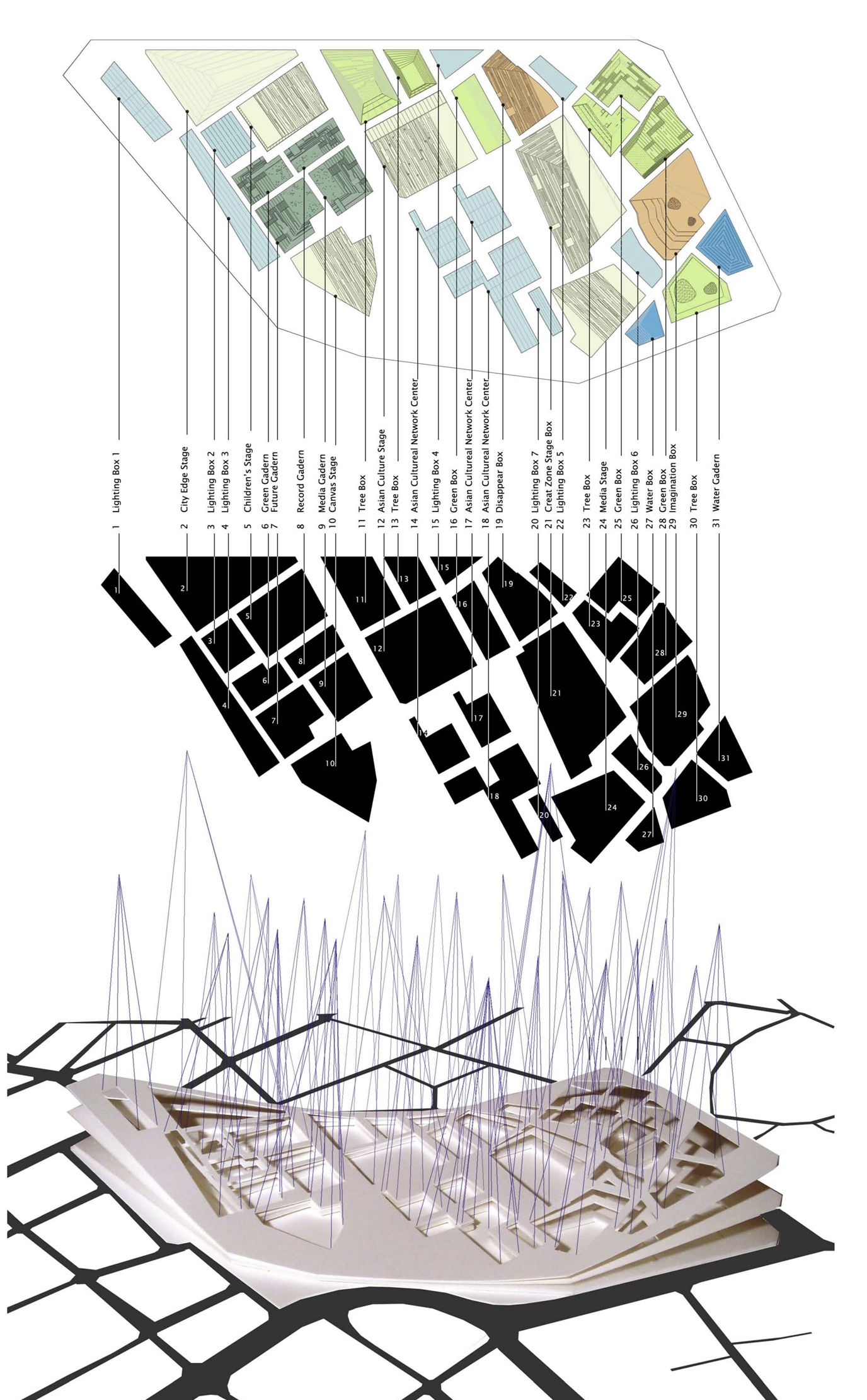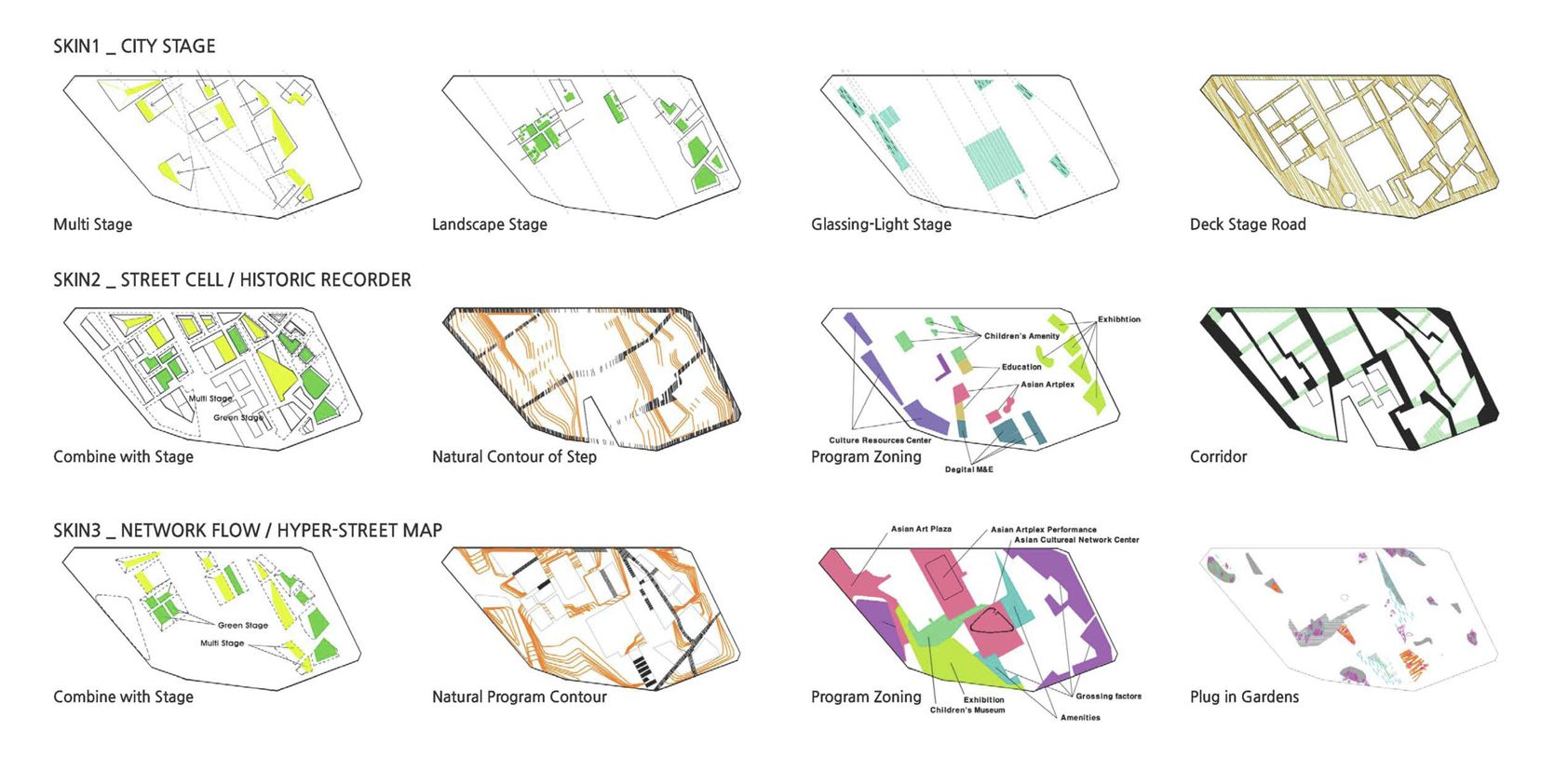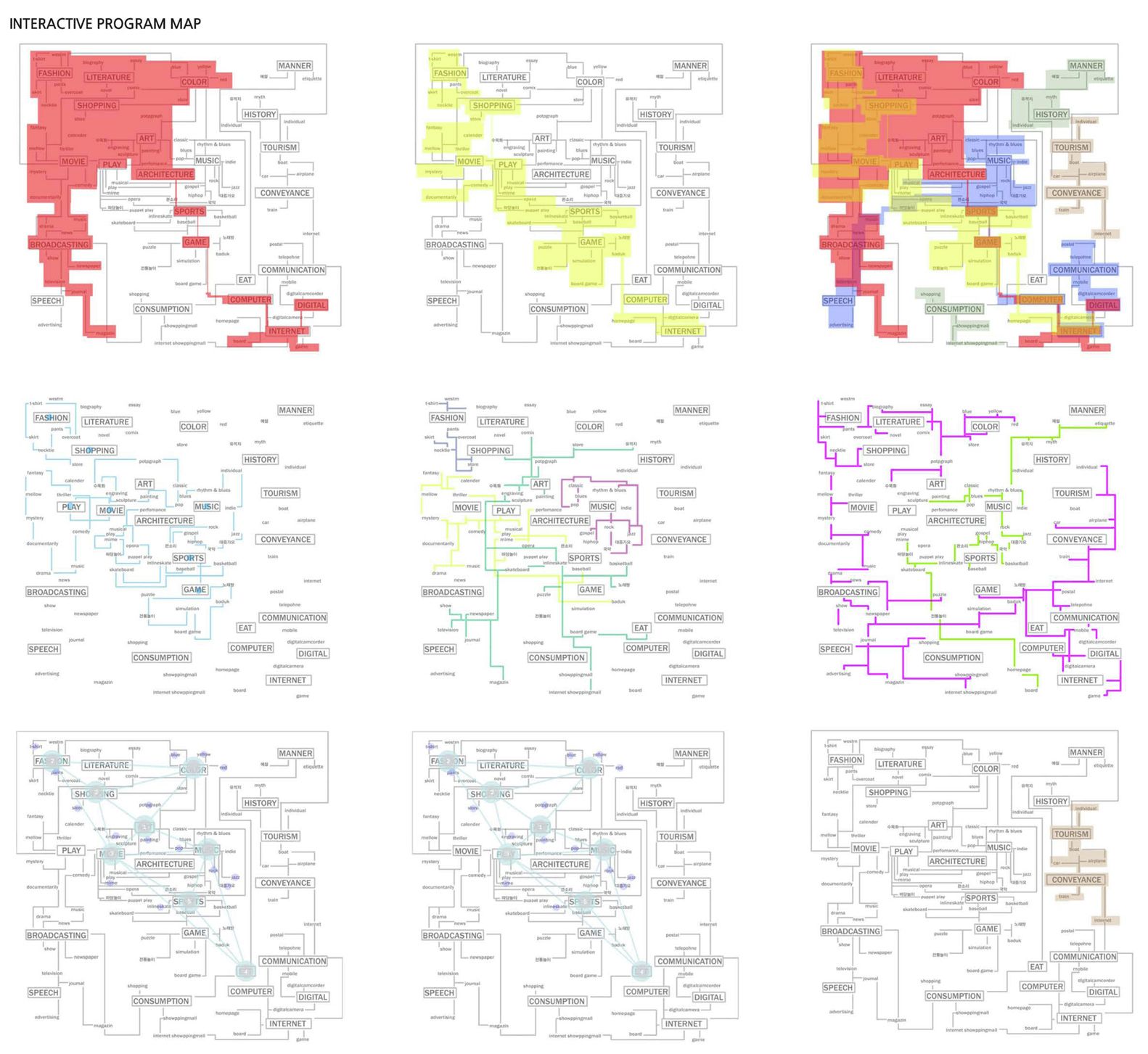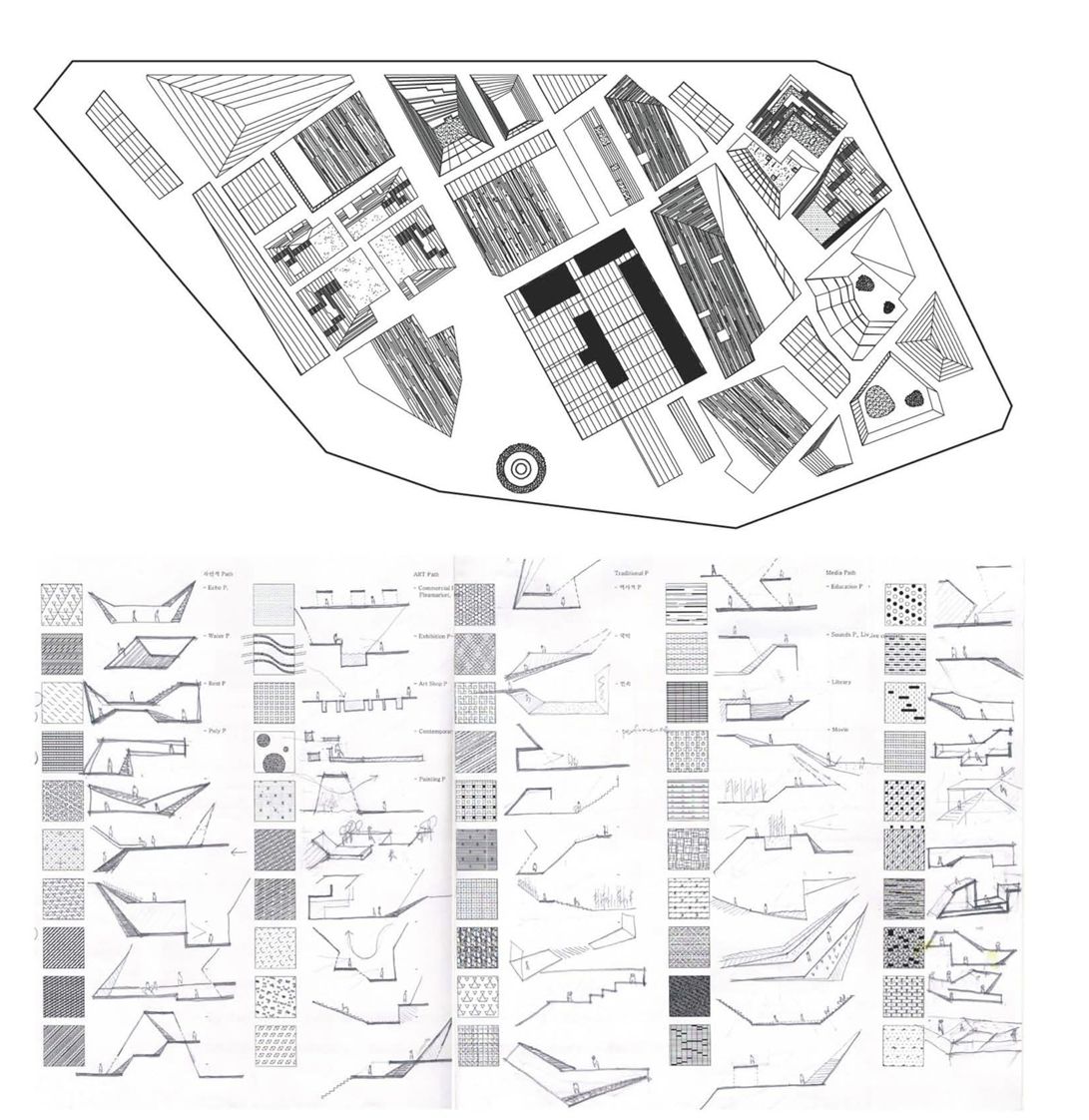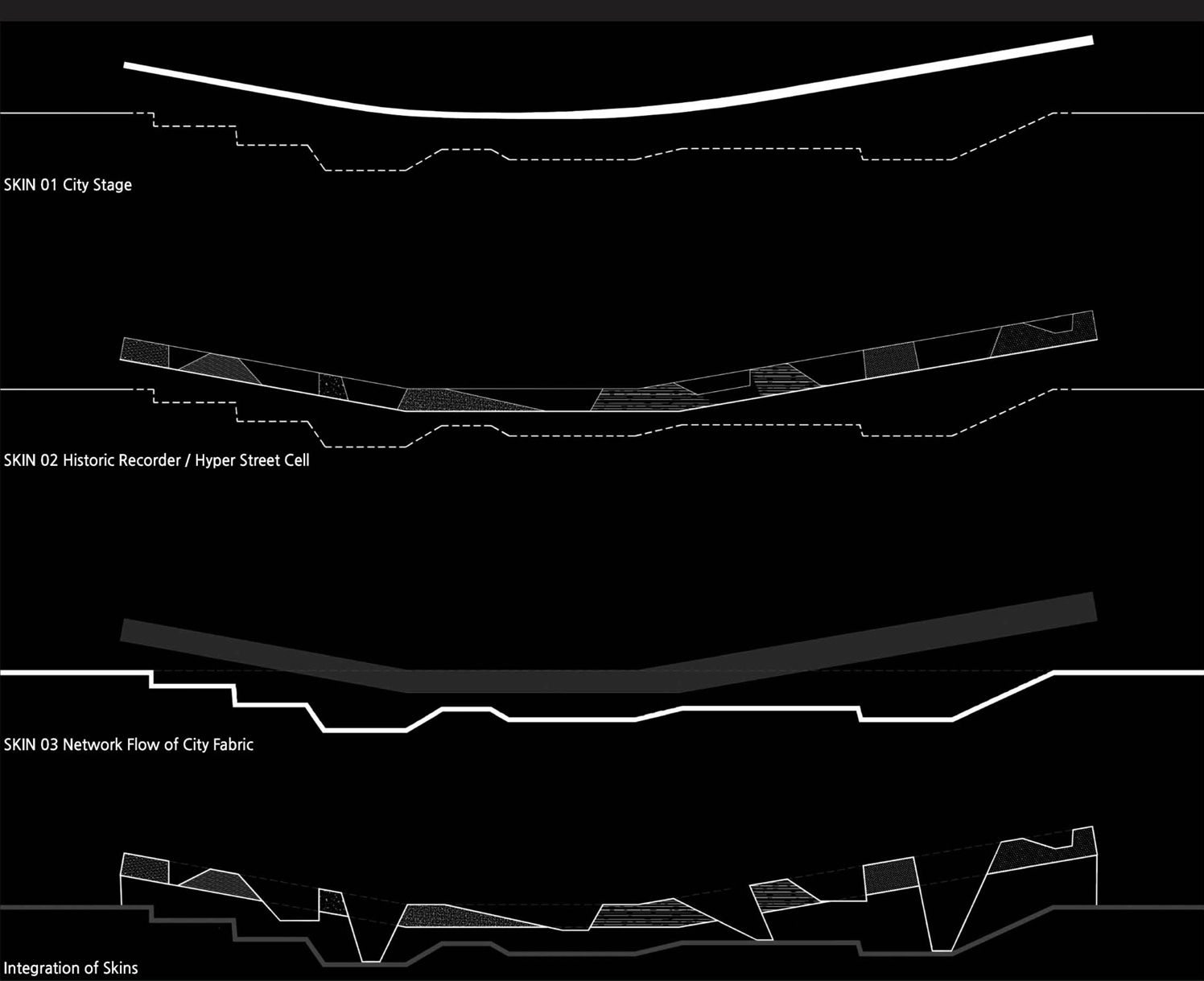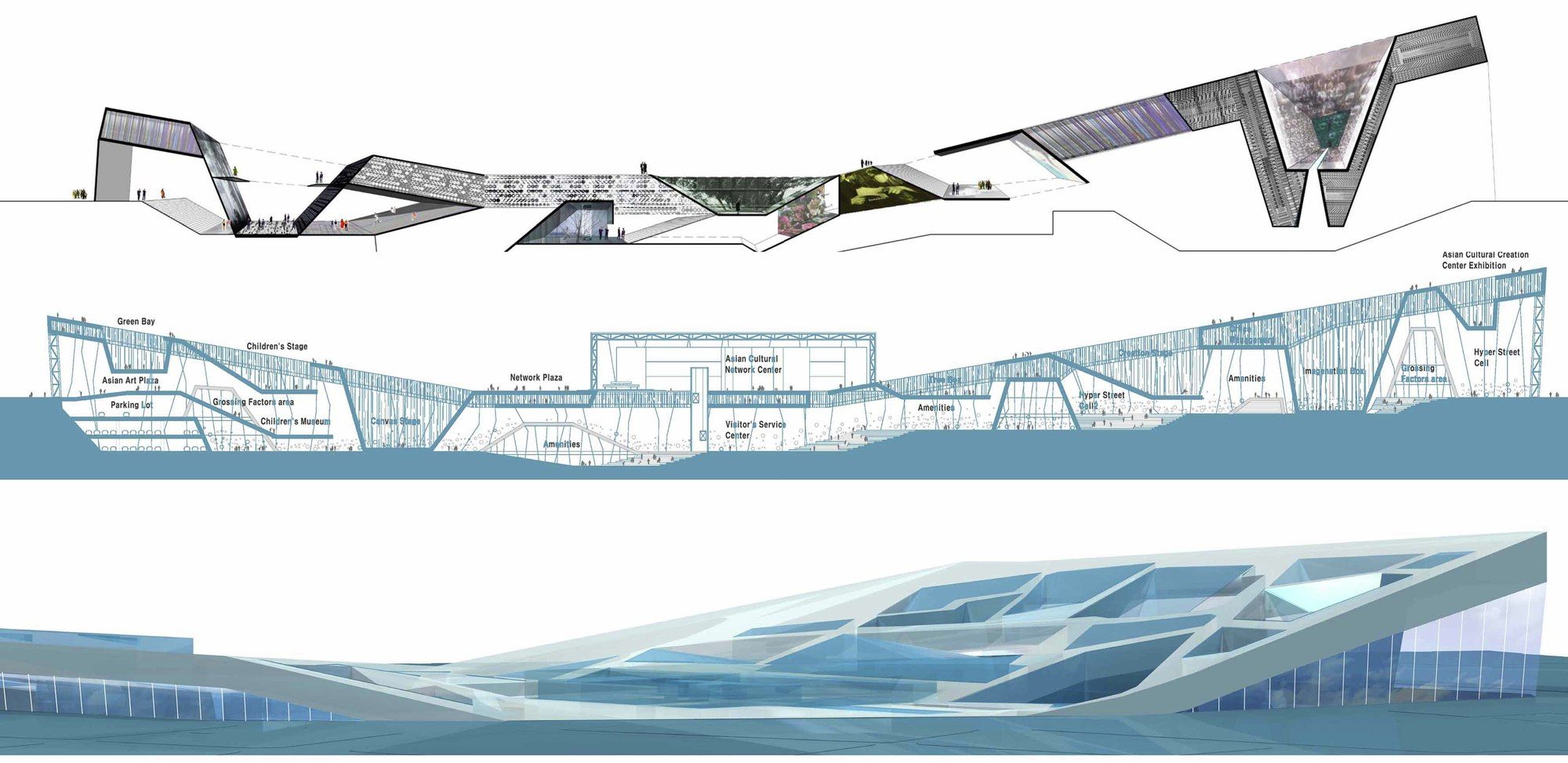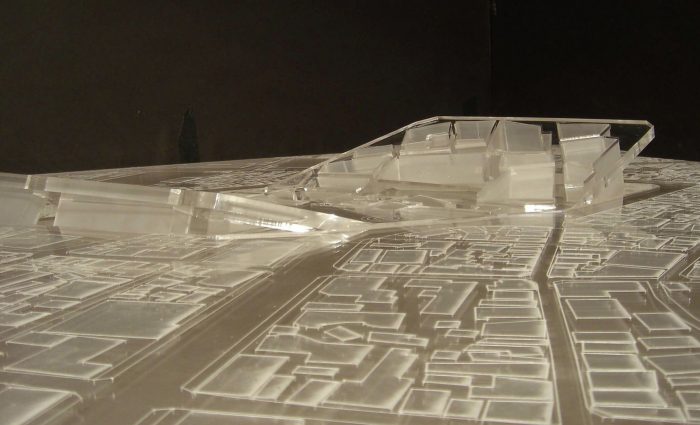The Asian Culture Complex is an embodiment of openness. It provides openness visually as well as an openness of choices, presenting endless possibilities for the user and accommodating different activities. It is essentially a stage, a mega-showcase of people, activity, and culture. Its openness transforms the surrounding cityscape. In a cityscape, a street is a void between large volumes, and UnSangDong Architects + Kim Woo Il showcase those streets in this soon-to-be urban center, making the street a stage for human activity. One could argue that the ‘stage’ they create is one big street, but one could also argue that the ‘stage’ is what all the surrounding streets spill into. Countless activities and events have happened in those streets, making the existing site rich with history. They call it ‘culture-scape,’ and I find it the perfect description of their articulation, for it is not just a landscape, nor just a building, nor just a stage; it is all of those, all-alluding to the culturally rich site.
It is essentially a stage, a mega-showcase of people, activity, and culture. Its openness transforms the surrounding cityscape. In a cityscape, a street is a void between large volumes, and UnSangDong Architects + Kim Woo Il showcase those streets in this soon-to-be urban center, making the street a stage for human activity. One could argue that the ‘stage’ they create is one big street, but one could also argue that the ‘stage’ is what all the surrounding streets spill into. Countless activities and events have happened in those streets, making the existing site rich with history. They call it ‘culture-scape,’ and I find it the perfect description of their articulation, for it is not just a landscape, nor just a building, nor just a stage; it is all of those, all-alluding to the culturally rich site.
 The Culture Complex provides many stages programmatically, but what intrigues me especially is that the whole roof, or ground, for there isn’t a clear distinction, acts as stage in and of itself. Literally, it accounts for venues of different scales and different occupants, but, indirectly, its openness and limitless access makes it a stage of the people. It showcases the people occupying the space. It is infrastructure for what is already there: the people and culture.
The Culture Complex provides many stages programmatically, but what intrigues me especially is that the whole roof, or ground, for there isn’t a clear distinction, acts as stage in and of itself. Literally, it accounts for venues of different scales and different occupants, but, indirectly, its openness and limitless access makes it a stage of the people. It showcases the people occupying the space. It is infrastructure for what is already there: the people and culture.
The roofed programmatical elements are tucked away at either side of this stage or platform, minimizing the intrusion onto the landscape and allowing the occupants to move through the building, on top of the building, and into the building. The Asian Cultural Complex questions a building as a mass. Sometimes open space is essential. Open space as opposed to empty space, is cultivated and deliberate. UnSangDong Architects + Kim Woo Il provide framework for a canvas, whereas the occupants are the art. They created a simple form and developed a clear concept. To get to that clarity, though, there are many underlying layers at play.
The Asian Cultural Complex questions a building as a mass. Sometimes open space is essential. Open space as opposed to empty space, is cultivated and deliberate. UnSangDong Architects + Kim Woo Il provide framework for a canvas, whereas the occupants are the art. They created a simple form and developed a clear concept. To get to that clarity, though, there are many underlying layers at play.
By Aiysha Alsane

